Okay! Now that finals are over for Module 2, and the Class of 2019 has reached (almost!) the halfway point, it’s time to begin celebrating many things, including the upcoming holidays. Enjoy this lighthearted take on “The Twelve Days of Christmas” by Maggie Robinson ’19. *Oh — by the way — SIMBA stands for The Sustainable Innovation MBA. We guess we’ll allow it…
On the first day of SIMBA, my professors gave to me, Classmates that become family.
On the second day of SIMBA, my professors gave to me,
2 Vermont Weddings, and Classmates that become family.
On the third day of SIMBA, my professors gave to me,Fusco’s 3 part test, 2 Vermont Weddings, and Classmates that become family.
On the fourth day of SIMBA, my professors gave to me, 4 intense modules, Fusco’s 3 part test, 2 Vermont Weddings, and Classmates that become family.
On the fifth day of SIMBA, my professors gave to me, Porter’s 5 Forces, 4 intense modules, Fusco’s 3 part test, 2 Vermont Weddings, and Classmates that become family.
On the sixth day of SIMBA, my professors gave to me, 6 toolkit workshops, Porter’s 5 Forces, 4 intense modules, Fusco’s 3 part test, 2 Vermont Weddings, and Classmates that become family.

On the seventh day of SIMBA, my professors gave to me, 7th gen speakers, 6 toolkit workshops, Porter’s 5 Forces, 4 intense modules, Fusco’s 3 part test, 2 Vermont Weddings, and Classmates that become family.
On the eighth day of SIMBA, my professors gave to me, 8 weeks a module, 7th gen speakers, 6 toolkit workshops, Porter’s 5 Forces, 4 intense modules, Fusco’s 3 part test, 2 Vermont Weddings, and Classmates that become family.
On the ninth day of SIMBA, my professors gave to me, 9 daily coffees, 8 weeks a module, 7th gen speakers, 6 toolkit workshops, Porter’s 5 Forces, 4 intense modules, Fusco’s 3 part test, 2 Vermont Weddings, and Classmates that become family.
On the tenth day of SIMBA, my professors gave to me, 10 module teams, 9 daily coffees, 8 weeks a module, 7th gen speakers, 6 toolkit workshops, Porter’s 5 Forces, 4 intense modules, Fusco’s 3 part test, 2 Vermont Weddings, and Classmates that become family.
On the eleventh day of SIMBA, my professors gave to me, 11 Office references, 10 module teams, 9 daily coffees, 8 weeks a module, 7th gen speakers, 6 toolkit workshops, Porter’s 5 Forces, 4 intense modules, Fusco’s 3 part test, 2 Vermont Weddings, and Classmates that become family.
On the twelfth day of SIMBA, my professors gave to me, 12 rewarding months, 11 Office references, 10 module teams, 9 daily coffees, 8 weeks a module, 7th gen speakers, 6 toolkit workshops, Porter’s 5 Forces, 4 intense modules, Fusco’s 3 part test, 2 Vermont Weddings, and Classmates that become family.
Photo by erin walker on Unsplash

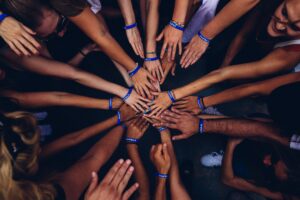 The first way that business can help refugees is by investing in refugee-owned/founded businesses. Research shows that refugees are more likely to hire fellow refugees. Because of this investment, businesses can support more than just one refugee; they can help many others get hired as well. One example of an impact investment organization that specializes in investing in refugee-founded businesses is the Refugee Investment Network (RIN). The RIN works to help move private capital to investment in financing of companies that benefit both refugees and their host communities.
The first way that business can help refugees is by investing in refugee-owned/founded businesses. Research shows that refugees are more likely to hire fellow refugees. Because of this investment, businesses can support more than just one refugee; they can help many others get hired as well. One example of an impact investment organization that specializes in investing in refugee-founded businesses is the Refugee Investment Network (RIN). The RIN works to help move private capital to investment in financing of companies that benefit both refugees and their host communities. While most incoming Sustainable Innovation MBA students were worried about academics or moving to a new city, my biggest concern was whether or not I would have the time for bike races. Maybe my priorities weren’t totally in order, but the drive to ensure that I made time to train and race my bike brought me some success in the program. On the first day of orientation, I had convinced myself I would be too busy to race, and that my focus needed to be on nothing but school. Being a bike racer though, I can be competitive at times, and decided that I would compete with myself to race as many times as I could between August and December. The thing standing in my way was fourteen courses. My only option was to create productivity strategies that forced me to stay far in advance of deadlines and deliverables.
While most incoming Sustainable Innovation MBA students were worried about academics or moving to a new city, my biggest concern was whether or not I would have the time for bike races. Maybe my priorities weren’t totally in order, but the drive to ensure that I made time to train and race my bike brought me some success in the program. On the first day of orientation, I had convinced myself I would be too busy to race, and that my focus needed to be on nothing but school. Being a bike racer though, I can be competitive at times, and decided that I would compete with myself to race as many times as I could between August and December. The thing standing in my way was fourteen courses. My only option was to create productivity strategies that forced me to stay far in advance of deadlines and deliverables. I first encountered this quote by Gandhi on Pinterest last fall, when I was beginning the grad school application process. I found it to be a comforting reminder that although my aspirations were large (telling people you want to save the planet can result in a lot of blank stares), I could find a way to make an impact on my own terms. While, I’ve never been a particularly loud or forceful person, I’ve never lacked conviction. Ultimately, I knew that because I would probably never be the person leading a protest or going door-to-door, I needed to find the avenue that best allowed me to use my interests and abilities to bring about change. This is what drew me to The Sustainable Innovation MBA. I knew it would hone my current skill-sets, provide me with the tools needed to make an impact, and expose me to avenues for change I didn’t yet know existed. In this regard, the program has most certainly not disappointed.
I first encountered this quote by Gandhi on Pinterest last fall, when I was beginning the grad school application process. I found it to be a comforting reminder that although my aspirations were large (telling people you want to save the planet can result in a lot of blank stares), I could find a way to make an impact on my own terms. While, I’ve never been a particularly loud or forceful person, I’ve never lacked conviction. Ultimately, I knew that because I would probably never be the person leading a protest or going door-to-door, I needed to find the avenue that best allowed me to use my interests and abilities to bring about change. This is what drew me to The Sustainable Innovation MBA. I knew it would hone my current skill-sets, provide me with the tools needed to make an impact, and expose me to avenues for change I didn’t yet know existed. In this regard, the program has most certainly not disappointed. With the increasing gap in the distribution of economic wealth in the United State along with the increased cost of living, the poverty line is growing, which is putting the former lower middle-class families in extreme risk of becoming impoverished and economically unstable. If intervention is not taken soon, then there is a huge likelihood that the homeless population in America will increase.
With the increasing gap in the distribution of economic wealth in the United State along with the increased cost of living, the poverty line is growing, which is putting the former lower middle-class families in extreme risk of becoming impoverished and economically unstable. If intervention is not taken soon, then there is a huge likelihood that the homeless population in America will increase.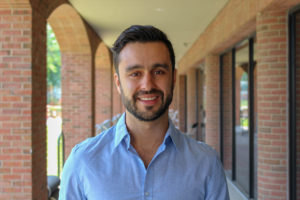 “
“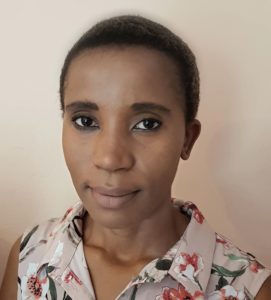 “Moving to Vermont for the program was not without its challenges, and they included but were not limited to: finding accommodation from another continent, completing a visa application in three weeks and moving two chunky pieces of luggage between four flights. But the most difficult part about the whole move was explaining to friends and family where
“Moving to Vermont for the program was not without its challenges, and they included but were not limited to: finding accommodation from another continent, completing a visa application in three weeks and moving two chunky pieces of luggage between four flights. But the most difficult part about the whole move was explaining to friends and family where 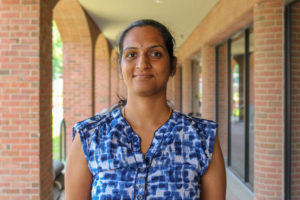 “Fortunately, I didn’t have the problem of explaining where Vermont is to my family and friends like Noelle, because I was already living in Vermont. But, when I was moving from Boston, I received lot of questions on where
“Fortunately, I didn’t have the problem of explaining where Vermont is to my family and friends like Noelle, because I was already living in Vermont. But, when I was moving from Boston, I received lot of questions on where 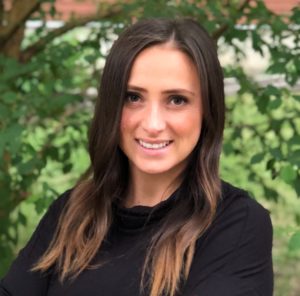 “Here are my Top 5 things to know as a Canadian studying in Burlington:
“Here are my Top 5 things to know as a Canadian studying in Burlington: It’s never been easier to order goods, food/groceries and socialize without ever leaving one’s home. As a society, we are moving more towards a world where we don’t have to do anything or go anywhere that we do not want to. Yet, according to the
It’s never been easier to order goods, food/groceries and socialize without ever leaving one’s home. As a society, we are moving more towards a world where we don’t have to do anything or go anywhere that we do not want to. Yet, according to the 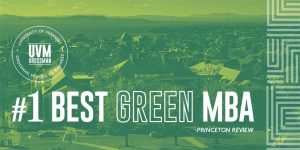 This is a significant recognition for the program and
This is a significant recognition for the program and 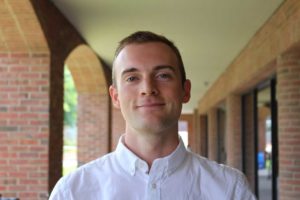 If ever there has been an MBA program designed with disruption and creative destruction in mind, it’s this one. This MBA isn’t a fast track to Wall Street, it’s a fast track to learning how to be a serial industry disruptor.
If ever there has been an MBA program designed with disruption and creative destruction in mind, it’s this one. This MBA isn’t a fast track to Wall Street, it’s a fast track to learning how to be a serial industry disruptor.